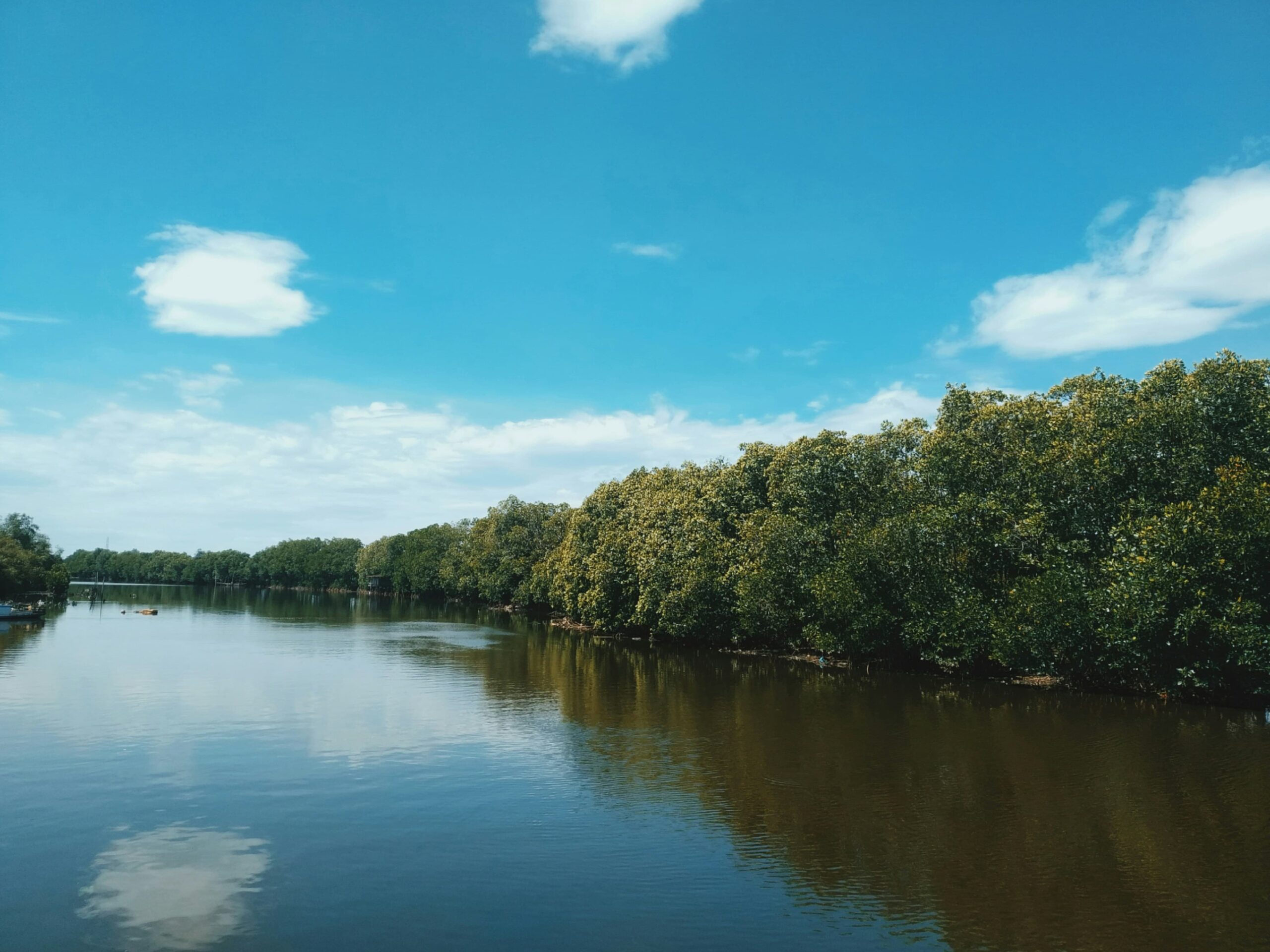MANGROVE ECOSYSTEM

Mangroves are unique coastal ecosystems found in tropical and subtropical regions, characterized by salt-tolerant trees and shrubs that grow in intertidal zones—areas that are submerged during high tide and exposed during low tide. These ecosystems are vital for coastal biodiversity, climate regulation, and human livelihoods.
Characteristics of Mangroves
Adaptations to Saline Environments
Salt Tolerance: Mangroves have specialized mechanisms to exclude or excrete salt, such as salt-filtering roots or salt-secreting leaves.
Aerial Roots: Many mangrove species have unique root systems, such as prop roots (e.g., red mangroves) or pneumatophores (e.g., black mangroves), which help them breathe in waterlogged, oxygen-poor soils.
Vivipary: Mangrove seeds often germinate while still attached to the parent tree, producing seedlings (propagules) that can float and establish themselves in new locations.
Biodiversity
- Mangroves support a wide range of species, including fish, crabs, mollusks, birds, and even mammals like monkeys and tigers in some regions.
- They serve as critical nursery grounds for many marine species, including commercially important fish and shrimp.
Structure
Mangrove forests are typically composed of a mix of tree species, such as red mangroves (Rhizophora), black mangroves (Avicennia), and white mangroves (Laguncularia).
The dense root systems create a complex habitat that provides shelter and food for marine and terrestrial organisms.
Ecological Importance
Coastal Protection
- Mangroves act as natural barriers, reducing the impact of storm surges, tsunamis, and coastal erosion by dissipating wave energy.
- Their root systems stabilize sediments and prevent shoreline erosion.
Carbon Sequestration
Mangroves are highly efficient at capturing and storing carbon dioxide, making them one of the most carbon-rich ecosystems on Earth. They play a crucial role in mitigating climate change.
Water Filtration
Mangroves filter pollutants and trap sediments, improving water quality in coastal areas.
Habitat and Nursery Grounds
They provide critical habitat for many species, including endangered animals like the Bengal tiger, manatees, and sea turtles.
Juvenile fish and crustaceans rely on mangrove ecosystems for food and shelter before moving to open waters.
Threats to Mangroves
Deforestation
Mangroves are often cleared for aquaculture (e.g., shrimp farming), agriculture, urban development, and timber.
Pollution
Oil spills, plastic waste, and chemical runoff from agriculture and industry can harm mangrove ecosystems.
Climate Change
Rising sea levels, increased storm intensity, and changing salinity levels threaten mangrove habitats.
Overexploitation
Overharvesting of mangrove wood for fuel, construction, and tannins can degrade these ecosystems.
Conservation Efforts
Protected Areas
Establishing marine protected areas and mangrove reserves to safeguard these ecosystems.
Restoration Projects
Replanting mangroves in degraded areas to restore their ecological functions.
Community Involvement
Engaging local communities in mangrove conservation and sustainable resource management.
Policy and Awareness
Implementing policies to regulate land use and raising awareness about the importance of mangroves.